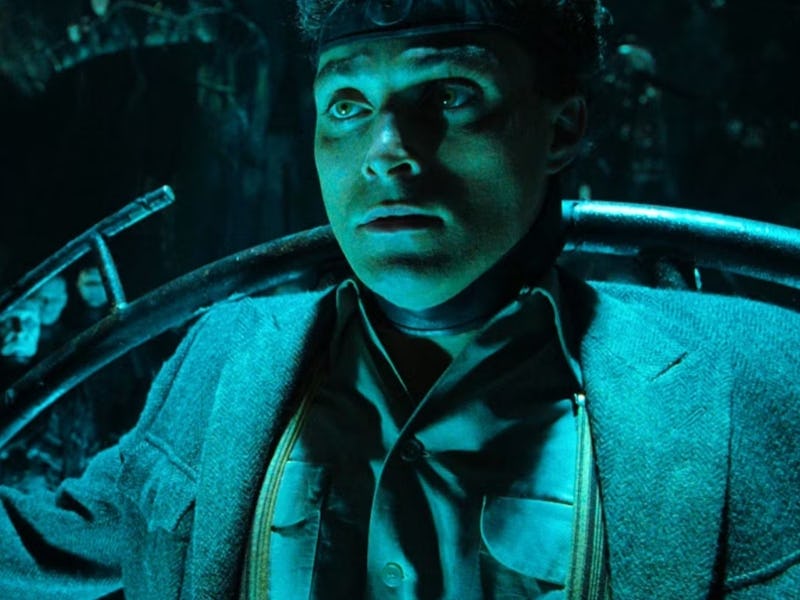Dark City Just Got A Big 4K Upgrade
If you thought the end of Daylight Saving Time was bad...

The protagonist of The Matrix has a double life. By day, he’s Thomas Anderson, a respectable software programmer. By night, he’s the notorious cybercriminal Neo. But those are rookie numbers. Dark City’s John Murdoch (Rufus Sewell) has had an indefinite number of identities constructed and cast off without his knowledge, until he awakens one night to find his latest is that of a murderer. But is he really? John can’t remember who he is, and fragments of resurfacing memories only confuse him further. As he wanders around, the film’s very literal title takes on a figurative meaning: he’s just one man in a city full of people in the dark about themselves.
Now, with Arrow Video releasing a new 4K UHD Blu-ray, there’s no better time to revisit The Crow director Alex Proyas’ underrated gem.
HOW WAS DARK CITY RECEIVED UPON RELEASE?
Roger Ebert called Dark City 1998’s best film, likening the scope of its imagination to sci-fi titans 2001: A Space Odyssey and Metropolis. Even critics who weren’t as effusive about its complex mystery plot — which worried producers so much they got Proyas to add a clunky explanatory voiceover — still acknowledged the film’s “stunning visual texture” and its painterly images that “looked like a million bucks.” Commercially, however, it was a box-office bomb, earning just $27.2 million on a budget of $27 million.
WHY IS Dark City IMPORTANT TO SEE NOW?
Despite now being a cult classic, Dark City still doesn’t have the same cultural cache as The Matrix, which was released a year later and shares some of its most interesting visual and thematic ideas. Consider the bare-bones plot of both films: people are unaware that their identities and worlds are mere constructs designed by non-human entities reliant on exploiting their minds and bodies, until a reality-bending savior emerges. “Everyone was just sitting around laughing, realizing that they’re just about to make Dark City again, but called ‘The Matrix’ instead,” said colorist Peter Doyle of working with the Wachowskis.
Years later, Christopher Nolan cited Dark City as an influence on Inception, also a film about concocted realities and the fallibility of memory. It’s no coincidence that both feature imagery of men awakening in a bathtub, or feats of architectural origami in which entire city landscapes can be reshaped at will.
Dark City’s seemingly endless night, conjured by entities who can’t stand the sun, isn’t unlike the real world envisioned in The Matrix, deliberately plunged into darkness as a means of thwarting its solar-powered oppressors. Greens tint both films’ atmospheres, similar color palettes from the same colorist. Both even have overlapping sets, and scenes in which an urgent phone call alerts the protagonist to his pursuers.
In all three films, memories aren’t accurate records of reality. They’re malleable, vulnerable to meddling. Each night, Dark City’s inhabitants are imprinted with new personalities and pasts as part of an experiment. What happens when what you remember has been manufactured, but still feels like a genuine experience? Inception follows the idea of a planted thought to both triumphant and tragic conclusions. In both films, characters falsely become convinced that they’re dreaming, and commit suicide in the hope of waking up. On the other hand, John’s “wife” (Jennifer Connelly) insists that while their marriage might have been faked, the purity of emotion she feels towards him can’t be. A similar principle enables Inception’s gang to nudge a businessman into wanting to destroy his empire. More poignantly, both films feature weary protagonists who, above all else, just want to go home.
Meet your local urban planning committee.
WHAT NEW FEATURES DOES THE Dark City BLU-RAY HAVE?
Dark City’s gorgeous nighttime photography — which increasingly feels like a lost art — has never looked better than in Arrow’s new 4K restoration, with its striking interplay of light and shadow, and evocatively lit characters’ faces. One disc features the film’s theatrical cut. The other, the director’s cut, sans that unnecessary opening voiceover. The plethora of other features includes:
- New 4K restoration from the original 35mm camera negative approved by director of photography Dariusz Wolski.
- 4K Ultra HD (2160p) Blu-ray presentation of the Director’s Cut of the film in Dolby Vision (HDR10 compatible).
- Original DTS-HD MA 5.1, stereo 2.0, and new Dolby Atmos audio options.
- Optional English subtitles for the deaf and hard of hearing.
- New audio commentary by director Alex Proyas.
- New audio commentary with Film Versus Film podcast co-hosts Craig Anderson, Bruce Isaacs, and Herschel Isaacs.
- Archive audio commentary by director Alex Proyas.
- Archive audio commentary by film critic Roger Ebert.
- Archive audio commentary by writers Lem Dobbs and David S. Goyer.
- Archive introduction by Alex Proyas.
- Return to Dark City, a new hour-long documentary featuring interviews with director Alex Proyas, producer Andrew Mason, production designers Patrick Tatopoulos and George Liddle, costume designer Liz Keough, and storyboard artist Peter Pound.
- Rats in a Maze, a new visual essay by film scholar Alexandra West.
- I’m as Much in the Dark as You Are, a new visual essay by film scholar Josh Nelson on film noir and identity in Dark City.
- Storyboards.
- Reversible sleeve featuring original and newly commissioned artwork by Doug John Miller.